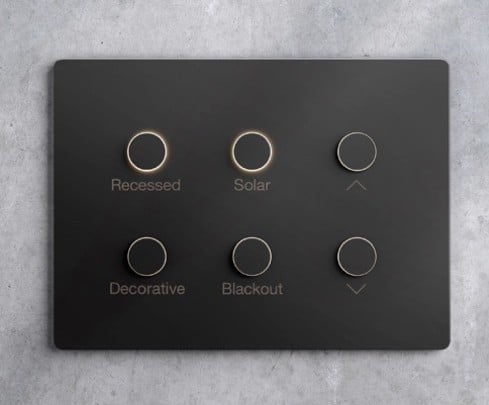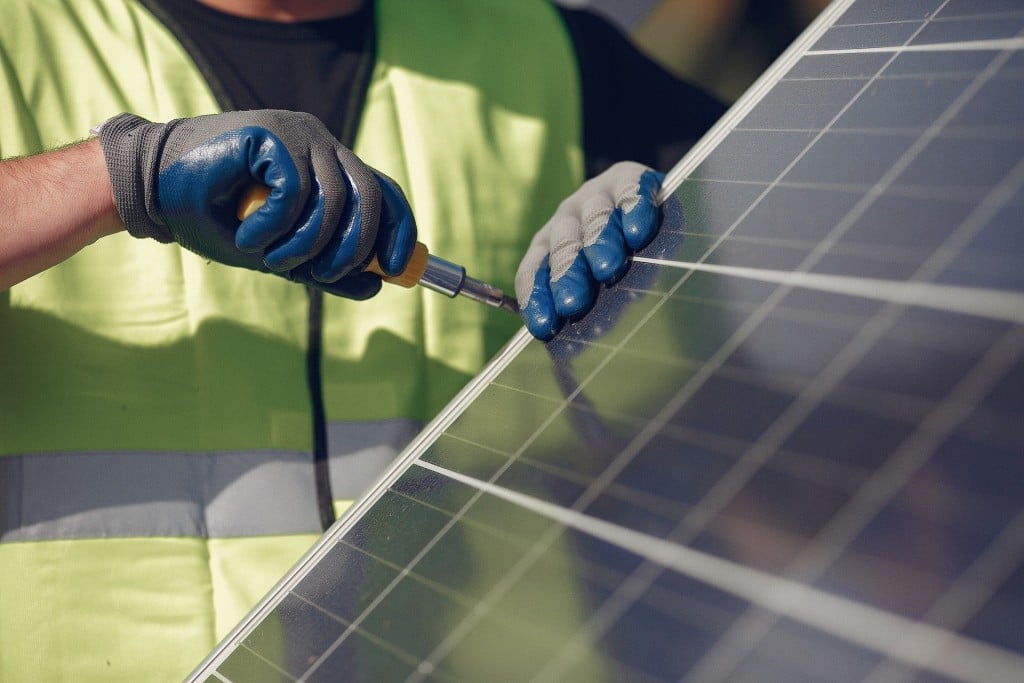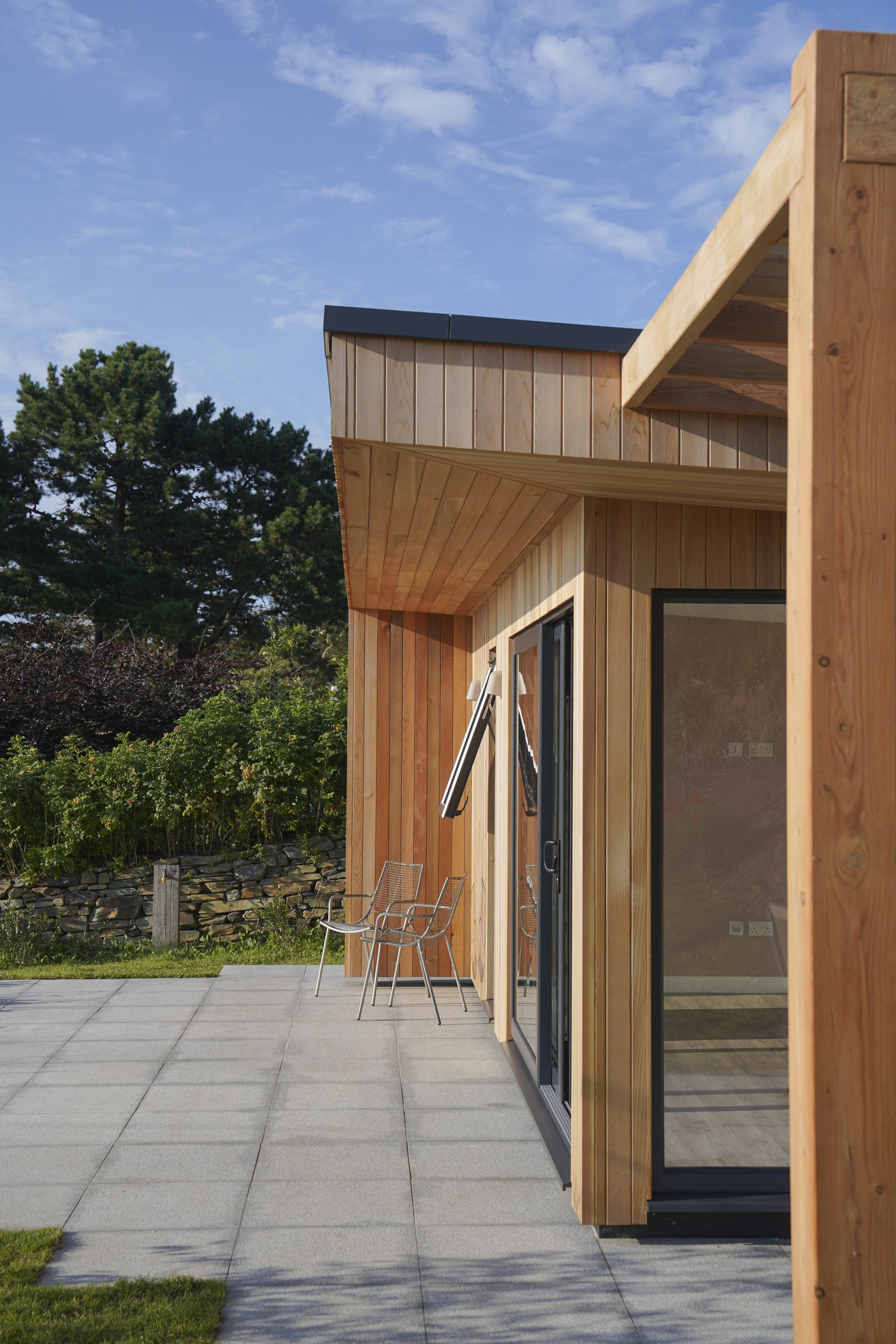More of the behind-the-scenes details that help your house to function as the home of your dreams.
Part 3 of Mechanical & Electrical (M&E) Services
Part of our Delving into the Buzzwords series
Share:
Following on from parts 1 and 2 of Mechanical and Electrical (M&E) Services, which looked at plumbing and ventilation and light and power, we are going to discuss the many other essential or nice-to-have additional features that can be part of your home in the ‘mechanical and electrical’ category – no, we’re not doing scatter cushions yet. We’re here to look at gadgets and media, communications, security, smart controls, and energy generation, together with electric vehicle charging points.
Smart lighting & control systems
Controlling multiple lights (indoors & outside), audio and TV, curtains/blinds and heating with the press of a single button used to be a luxury, however these systems have started to be specified more often recently. Manufacturers are offering more choice, the integration of systems have simplified, and more affordable options have become available.
If you want to dip your toe in, the likes of Alexa, Google & Siri voice-controlled assistants have brought to market a raft of smart bulbs and devices which can be installed into ‘dumb’ outlets, and expanded easily by homeowners over time. We are happy to talk through the options with you, from the experience of other customers, and in our own homes.
Higher-end smart systems, such as Control 4, KNX, Lutron and Rako do away with ‘traditional’ circuits between specific switches and light fittings. Instead, like data wiring, all controls and appliances are individually wired back to a central control box to allow limitless combinations to be set up behind the scenes (via app, online, or a call centre). For example, when you sit down in the evening to read or watch TV in the lounge, one button press on your phone or wall switch can set the lounge wall, ceiling and table lights to differing brightnesses, close the blinds, and keep a light on in the hallway and kitchen, so you can easily top up your cup of tea or G&T.
You don’t need to use these systems throughout the house. Two of our projects have utilised multi-room audio systems (Sonos) and smart lighting systems purely for their open plan living, dining and kitchen areas. This offered an affordable solution and removed the clutter of multiple switches and dimmers in a single room with minimal wall space.
Extents of these systems, product integration, and their associated costs can range widely, therefore we’d recommend sharing your ideas with us and our electricians early on to get the best results.

Comms, Data, Media & Security
Alongside the standard switches and sockets, a wealth of specialist outlets and integrated fittings for telephone, data, media and security are available and might be worth integrating into your project.
Communications & Data
Do you still have a landline phone at home? Many people are happy to use their mobile phones for most communications with friends and family, but having a landline phone is still essential for some. Please let us know if you want any dedicated telephone points in your new project.
Traditionally, landline phones were handy as a backup if there was a power cut, although new ‘Digital Voice’ services being rolled out to new and existing users don’t often offer that facility, so that might be less important to you now.
If you’re comfortable using your smartphone instead, you may find the mobile signal in the more picturesque corners of our county can struggle, so house- or site-wide Wi-Fi becomes more of a consideration for many people.
Thanks to the Superfast Cornwall funding programme, which started in 2010, Cornwall has some of the best internet connectivity in the country, outperforming many rural areas with our fibre connections and ultrafast speeds, proving an excellent advantage for those who work remotely, watch or listen to a lot of content online, or just have an entire household wanting to use the internet at the same time.
If your plot isn’t located near the fibre network, we have found Starlink is an invaluable service for our construction sites to access the internet where mobile internet doesn’t reach, or when the holidaymakers use all the capacity in the summer!
Your current internet provider might have started to offer additional ‘discs’ or’ hubs’, to extend your WiFi throughout the house. They generally repeat the signal from the first station, but that has limitations, as electrical and ventilation services, structures and foil-backed insulation get in the way and limit their range. Instead, our subcontractors prefer to consider the building layout and wire specifically designed access points exactly where needed to ensure comprehensive coverage throughout the building or site. We also recommend providing wired outlets to data-hungry items like TVs and workstations, reducing the competition for the wireless signals. We’ll just plug your provider’s hub or router into the system, and away we go.
Media (TV & Audio)
Many of us have some online streaming services for our internet-enabled TVs, whether they are iPlayer or one of the paid services. Perhaps this is all you need, or maybe you want Freeview and Sky services as well. Many distribution options are available, whether you want just one TV in the lounge or many throughout the house, and the multitude of requests and options have yet to flummox any of the electricians we work with. Just let us know what arrangements you’d like, and they can hide all the wires and boxes neatly out of sight.
Similarly with audio, whether you’ve amassed a collection of records or CDs and want to listen in any room with discrete in-built speakers, stream content from your smartphone to a Bluetooth speaker, or just listen to a radio on the kitchen worktop, we can offer our input, or direct you to a specialist to consider all the options.
Security
Alarm systems used to be simple, with a keypad in the hallway, and an alarm box on the outside to annoy your neighboursAnyone who resides near to a project or can pass by and can be affected in any way by the project, for example walkers on a track which runs along the boundary of the construction site. when you went away and the cat triggered the sensors! CCTV transitioned from commercial applications to high-end homes, and then the ubiquitous doorbell cameras came along.
In addition to the smoke and carbon monoxide alarms we need to install by law, there is a raft of security options available to you, and thankfully, they have started to integrate, so you don’t need umpteen apps on your phone or a bank of CCTV monitors and controls in the hall. If you’re contemplating an electric gate, an intercom and opening controls for it can be easily included, too.
Discussions about your current requirements and potential for future expansion can allow us to easily incorporate all the controls, wires and outlets, making the systems neat and easy to use and expand for a future-proofed home, whether it’s your primary residence or you want to keep an eye on it when you’re ‘up the line’.
Energy Generation
Energy generation can offer ‘eco-credentials’, but most importantly for bill payers, they can reduce your monthly outgoings too.
Heat Generation
Solar panels that use the sun to heat water have been around for decades and can offer the cheapest low-carbon input to your building’s heat input. It’s less effective in buildings occupied infrequently, so you may wish to consider electricity generation instead if your project is for a second home.
Electricity generation
Photovoltaic, or PV panels, are the first form of electricity generation that people think of, and are seen on many roofs. Efficiencies and guaranteed lifespans have increased dramatically in recent years, with up to 40 years available for the latest panels.
They can be suitable for flat and pitched roofs, and recent installations can be installed flush with the tiles or slates to reduce their visual impact.
Other options exist, including wind and water turbines, subject to the potential and space of your plot, and in addition, Combined Heat & Power (CHP) boilers can use exhaust or excess heat to generate electricity.

Battery storage
Panels and turbines used to attract generous government contributions to offset their upfront costs; however, as their costs have reduced, so have these grants and feed-in-tariffs. Therefore, for some, battery storage has become a feasible choice for storing excess electricity when the sun goes down or the wind eases. The size and output of the various battery choices will depend on your building’s (and vehicles’) electrical need. We can arrange an early conversation with our subcontractors so you can weigh up the pros and cons of the available options.
Energy generation and storage aren’t necessary for all projects, and we can design new buildings to meet the requirements of SAP (Standard Assessment Procedure) by slightly increasing the insulation values of the building structure above the minimums required by the Building RegulationsLaws and standards that ensure buildings are safe and comfortable for their occupants and users, by meeting specific standards.. We would, however, recommend including some extra wires and circuits during the construction phase, so you or future occupants can add these devices easily in the future.
EV Charging
As the government is leading us away from purchasing new fossil-fuelled vehicles by 2035 at the latest, the Building RegulationsLaws and standards that ensure buildings are safe and comfortable for their occupants and users, by meeting specific standards. now include the provision of convenient electric vehicle charging at home and work, in new developments.
If you haven’t yet got an electric vehicle and are considering the pros and cons, a number of us at Richards now have hybrid and fully electric cars and can offer our experiences with them.
Safe to say, fuel cost savings of over 70% (or more, with special electricity tariffs) have been the biggest reward, in addition to performance, reduced maintenance costs and their ‘eco’ status.
Homeowners who don’t foresee the need for a charger anytime soon can direct us to install only the electricity and data cables necessary for future installations to take place with minimal disruption.
If the structure of a house is the bones and muscles, these three blogs are the nerves and blood vessels, (and also the gastro-intestinal system, if we’re running with this metaphor) ensuring that things are connected and work together – mostly unseen. We will have other Knowledge Hub articles coming soon looking at the bits that you actually see – the interior design, the finishes and flourishes that make each home yours.




